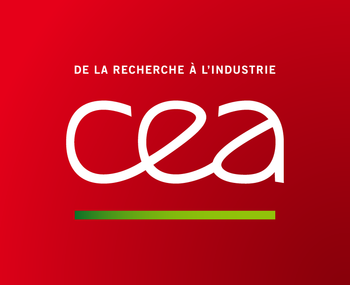CEA DSV – IBITECS

The IBITECS has the will to couple scientific excellence and technology development. The Institute is then attached to the establishment of strong industrial partnerships in the pharmaceutical, food and biotechnology domains, while maintaining excellence in fundamental research in line with CEA's strategic priorities. The institute brings together fifty biologists, biophysicists and chemists' research teams, about 450 people of all statuses, to conduct both basic and targeted research projects. All these activities revolve around the following areas:
- Therapeutic innovation
- Nanotechnologies
- Biodefense
- Bioenergy
- Life molecular and cellular mechanisms
IBITECS' units
The institute is structured into five units positioned on unique themes and methodologies.
The Molecular Labeling and Bio-organic Chemistry unit (SCBM) is working with biologists and offers specific chemical tools among which molecular labeling, and in which it is the undisputed expert since the creation of the CEA's Life Sciences Division.
The Pharmacology and Immunoanalysis unit (SPI) specializes in assays and biodetection methods (analytical immunology, drug pharmacokinetics, mass spectrometry).
The Molecular Engineering of Proteins unit (SIMOPRO) is a specialist in protein engineering by chemical and genetic approaches.
The Integrative Biology and Molecular Genetics unit (SBIGeM) studies the regulation of gene expression, cell cyclecontrol and cellular responses to stresses: genotoxic, radiological, nuclear toxic and oxidants.
The Bioenergetics, Structural Biology and Mechanisms Unit (SB2SM) studies the fundamental mechanisms governingcellular energy and membrane functions, using biochemical, molecular biology and genetics approaches, as well as structural (NMR and crystallography) and spectroscopic (optical and magnetic) methods.
IBITECS' partners
CEA/IBITECS supports and implements numerous partnerships at academic and industrial level. Since January 2015, two units of the institute (SBIGeM and SB2SM) are part of the Integrative Biology of the Cell Institute (I2BC), a jointresearch unit (UMR 9198), under joint authority of CEA, CNRS, Université Paris Sud, and are aimed at joining the Gif-sur-Yvette CNRS campus by 2018. The SPI hosts an INRA team in a mixed INRA/CEA unit. The IBITECS and the Molecular Chemistry and Materials Institute of Orsay (ICMMO) from Paris Sud University have created a collaborative research structure. In terms of industrial partnerships, in addition to numerous collaborations, IBITECS hosts in its buildings a R&D team of the SPI-Bio company, a joint CEA-Biomérieux unit and the Profilomic startup, spinoff of the Institute.
IBITECS and the campus
IBITECS, located on the Saclay CEA center, is at the heart of the campus and the Paris Saclay University's construction. The Paris-Saclay Campus is a project to create on the territory of the plateau of Saclay a world-class campus. This set should represent 20% of the French national research in 2020. Université Paris Saclay, whose creation on 1 January 2015 is the culmination of a long process of cooperation between actors in higher education and research of the Paris-Saclay, collects 19 founding members including the CEA, CNRS and Université Paris Sud in a COMUE (universities and community facilities). The Saclay center, and therefore the IBITECS are associated with the Campus and University project to become a key player.